Posted by Nodus Labs | January 5, 2019
A Case for the Body in AI Development

Most of the artificial intelligence research today is based on the notion of the mind. Computational models, neural networks… Brain seems to be in the center of attention and mind seems to be the Thing. Joscha Bach, a regular at Chaos Computer Club conferences, blows the audience’s mind from year to year with the new computational models of how the mind works. His propositions are truly inspiring and very informative, but even Joscha leaves the body at the periphery of his talks, which are most often focused on the brain and its representational and reward functions. What about the rest?
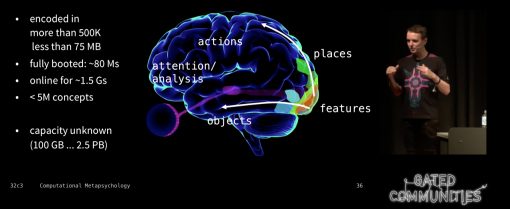
Screenshot from Joscha Bach talk at CCC
Let’s conduct a mental experiment: suppose we were created by somebody — the God, the aliens, evolution — and right now we’re trying to reverse engineer it. If we were hardware, like a computer, our current attempts at AI are like trying to understand the way this whole thing works by just looking at the processor or the logic board. Sure, CPU is an important part, but it’s not all there is to the way a computer works. It also has several interfaces and function. Its design is determined by its environment. The processor needs to be cooled, it needs to have power. Looking into the processor is not enough, we need to study the whole system.
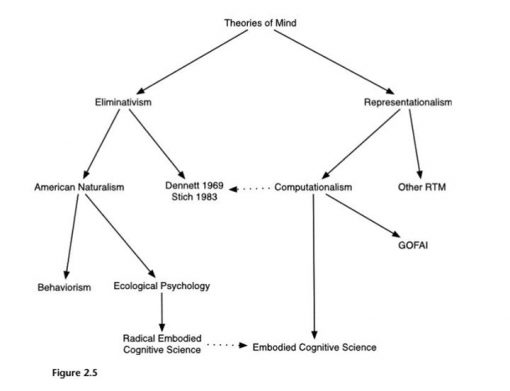
Image from the “Radical Embodied Cognitive Science” book by Tony Chemero
The same applies when we study our mind in order to create the AI. There are numerous works on cognitive studies that make the case for embodied cognition. State-of-the-art research in Japan has shown that it’s much easier to construct a robot that can grab things if some of its “intelligence” is delegated from the AI into the physical matter. A simple action of grabbing something is nearly impossible to program if you were to use pure code to solve the issue. Things will break and fall, it’s going to be awkward. The researchers discovered that simply adding the soft pads to the robotic “fingers” with a feedback might already resolve some of the complex issues of precision that pure calculation is incapable of. This is where the design of the body takes the primary role in fulfilling the function.

A robotic hand. Because of the morphology of the hand, the elastic tendons, and the deformable finger tips, the hand will automatically self-adapt to the object it is grasping. Source: https://www.eucognition.org/index.php?page=cheap-grasping-with-a-robotic-hand
Another example is the whole homeostasis system. We can study the brain as much as we wish, but it’s going to die without the proper oxygen and blood supply regulated by the rest of the body, which, in turn, are regulated by brain. Recent research has shown the importance of gut neurons, of which there are many more than in the brain. They regulate our mood and our reward system, which, in turn, decides what our brain gives attention to. There’s a lot more to add: hormones, self-regulatory and communication mechanisms in our cells, gene-based programs, physical idiosyncrasies, which make us so unlike each other (even if we could have the same brains).
Therefore, the body is important. More important than we think. Just like our minds can be ridden with ideologies, habits, beliefs, ideas and patterns of thinking, bodies can also be sites for all kinds of ideological and cultural battles. The way we move determines the way we think and the way we interact with the world. It’s not about our brains. Smile and your brain produces pheromones making you feel happy. Sure, it is also possible the other way around, but the mere correlation does not mean that one is more important than the other.
When we talk about creating the mind, the AI, it is important to incorporate the body into the equation.
What is the body of this AI?
What are the principles it is based on?
What is its intelligence?
What are the patterns that it is based on and how does it affect our cognitive process?
Once we start talking about the body, we also are obliged to take our environment into the equation as well. Just like our growth and evolution is defined by epigenetics (certain genes may or may not express in certain environments), our cognitive process is defined by the way that we are both within our bodies and outside — in the environment.
What is the environment our AI is in?
How does it affect the environment and what effect the environment has on AI?
…
In order to start thinking about all these questions we developed the software for human beings that we call ∞OS. “OS” stands for the open source operating system. At its core it’s a set of principles and procedures derived from the way natural systems work (at every scale). Assimilation, adaptation, resilience, modularity, confluence… We try to understand and to explore these principles on the very basic physical level through the body in order to then see what kind of implications they may have on our human intelligence.
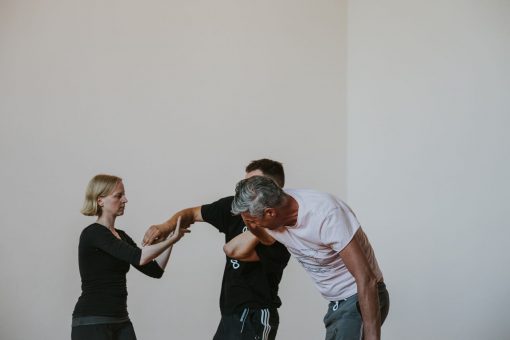
At the very core of the approach is the idea of confluence: the ability to merge one’s own flow with another flow, be it another person, system or an environment. Confluence can be found at the basis of many different processes in nature: wave-like oscillatory dynamics and synchonization, occurs through confluence as well. Strange attractors so often found in complex systems also represent a certain kind of confluence, as well as the different models that describe propagation in networks.
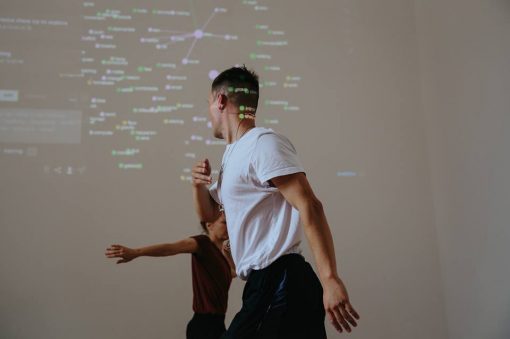
In ∞OS we attempt to bring our understanding of confluence from the abstracted realm into the direct physical embodied experience. This way it becomes available to us on the level of reflexes and instincts. This, in turn, makes it possible to apply it in other realms, outside of the physical domain. However, unlike a purely intellectual idea, the embodied understanding of confluence brings with it all the complexity that can be found in matter, which is governed by certain rules and, thus, makes it much more complete. Of course, it’s a two-way relation and a feedback loop: our understanding of intelligence is informed by the technology that allowed us to understand how nature works, then, based on this understanding, we can be creative in our development of technology, which will allow us to find out even more about the nature of the world and of our intelligence.
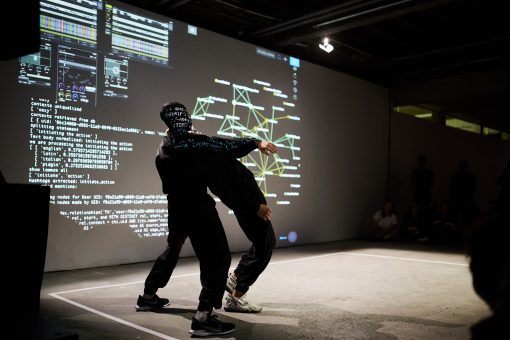
…
The implications of this approach span back into the AI research field. Most of the artificial intelligence applications today are concerned with the notions of efficiency and optimization. Open any book on AI and the algorithms they propose are very rational. Rationality is a very useful concept, but it’s very different from creativity. Humans are irrational and that’s why they are also creative.
The ideas of confluence that we explore in ∞OS can be applied to model relations between different systems, which will be a big question in AI soon (with all the APIs and all the different approaches we have). What kind of relation will help the both systems evolve? What kind of dynamics can be used to prevent one system from overtaking the other? For example, in our movement practice we work a lot with assimilating the incoming impulse and redirecting it. This requires a certain sensitivity, which should be intuitive, but it is not, because it is obfuscated by social and cultural blocks. We try to uncover this sensitivity by connecting the bodies to gravity and to each other in a way that reduces tension and prevents escalation. This allows two bodies (systems) to sync in and to produce resonance, which can then be understood in an embodied way. The session participants will then have a much more hands-on understanding of pacing and leading, the sync and connection — bringing those concepts from the abstract realm into the concrete life. They can then better apply those principles not only within the physical realm, but also in their work, designing the new systems, objects, frameworks, etc.
…
More info about ∞OS practice: http://8os.io
Cover photo by mvongrue@FlickR

